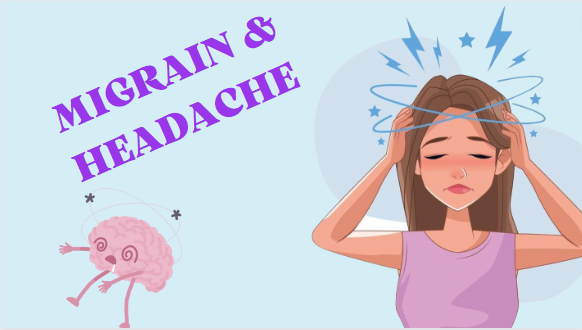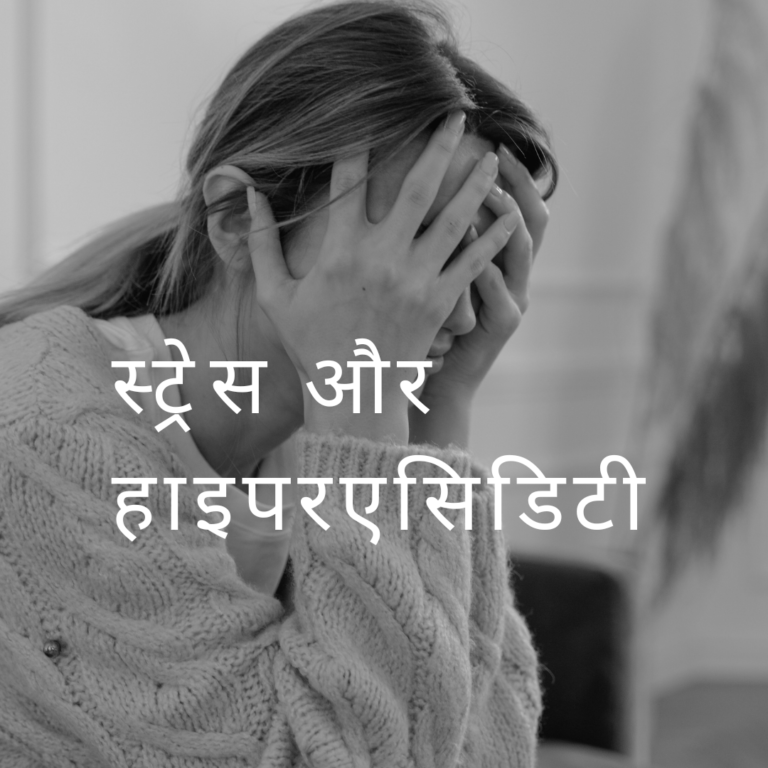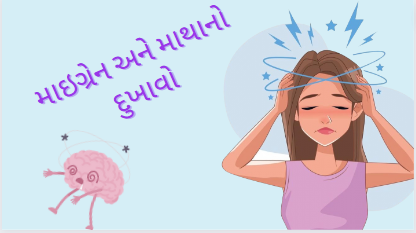MIGRAINE HEADACHES
MIGRAINE HEADACHES
A migraine is a headache that can cause severe throbbing pain or a pulsing sensation, usually on one side of the head. It’s often accompanied by nausea, vomiting, and extreme sensitivity to light and sound. Migraine attacks can last for hours to days, and the pain can be so bad that it interferes with your daily activities.
Nearly everyone experiences head pain once in a while. However, there are different types of headaches. The cause, duration, and intensity of this pain can vary according to each type.

Migraine is an often-lifelong neurological disorder characterized by recurrent moderate to severe headaches, usually on one side of the head. Headache is a term used to describe a variety of different pain symptoms that originate from different parts of the head.
Headache is a nature’s warning that something is wrong in the body. Headaches can be symptoms of illness while migraine is an illness.
Common causes of headaches: –
- Allergy
- Emotional reason
- Eye strain
- High blood pressure
- Low sugar
- Hangover
- Infection
- Nutritional deficiencies
- Tension
- Presence of poison or toxins in the body
- Migraine

Migraine is characterized by recurrent attacks of moderate to severe throbbing and pulsating pain on one side of the head. The pain is caused by the activation of nerve fibers within the wall of brain blood vessels traveling inside the meninges (three layers of membranes protecting the brain and spinal cord).
As per ayurveda migraine is caused by an imbalance of vata and pitta doshas. When vata is aggravated, pitta the fire element moves towards the head causing dilation of blood vessels, which brings on migraine

Diagnosis and management of migraine:-
1.When to suspect migraine-
- Recurrent headache from moderate to severe intensity.
- Visual aura
- Family history of migraine
- Onset of symptoms at or around puberty
2.Dignosis of migraine-
- Record medical history
- Apply diagnostic criteria
- Examine patient to exclude other causes
- Use neuroimaging only when second headache is suspected
3.patient centricity and education-
- Provide appropriate reassurance
- Agree on realistic objectives
- Identify predisposing or trigger factors
- Follow strategy to individualize therapy according to symptoms and needs
Symptoms of migraine: –
- Moderate to severe headaches
- Pounding or throbbing sensation
- An inability to do usual work
- Pain on one side of the head
- Nausea with or without vomiting
- Sensitivity to light
- aura (disturbances including flashes of light, blind spots, and other vision changes or tingling in your hand or face).

Causes of migraine: –
- Sensory simulation such as bright light, strong smell or loud music, stuffy rooms and temperature.
- Emotional triggers such as chronic stress, depression, anxiety and excitement
- Physiological factor is normally due to hormonal changes such as period induced migraine or thyroid problem
- Medication such as sleeping pills, HRT and birth control pills
- Nutritional factors such as magnesium deficiency, vitamin D deficiency, or low levels of B12.
- Food intolerance- dairy food, chocolate, msg, fish, certain beans etc…
- Poor gut health or longer gap between meals
- Wrong sleeping patterns including oversleeping
- Consumption of alcohol
- Lack of hydration
General guidelines to manage migraine at home :-
- Drink water especially if you have vomited
- Rest in quiet dark room for fast recovery
- Place a cool cloth on head
- Avoid smoking or drinking coffee and caffeine drinks
- Avoid consumption of alcohol
- Try to sleep
Lifestyle changes that may help: –
- Avoid triggers that bring on migraine
- Get regular sleep and exercise
- Slowly decrease the amount of caffeine consumed everyday
- Learn and practice stress management. (meditation, exercise)
Space element in treating migraine: –
- Start short fast-citrus juice diluted with water may be taken 6 times a day. A proper diet should be followed. Fasting should be done under guidance as fasting can sometimes trigger migraine attack.

Air element in treating migraine:-
- Deep diaphragmatic breathing is very effective in preventing migraine
- Practicing pranayama
- Air bath
- Some yoga postures for migraine- Hastapadasana (Standing Forward Bend), Setu Bandhasana (Bridge Pose), Shishuasana (Child Pose), Marjariasana (Cat Stretch),Paschimottanasana (Two-legged Forward Bend), Adho Mukha Savasana (Downward Facing Dog Pose), Padmasana (Lotus Pose), Shavasana (Corpse Pose)
Note: – it is not recommended to exercise while experiencing a migraine attack. But regular exercise makes the body release endorphins, chemicals that fight pain.
Water elements in treating migraine: –

- Hydration- drinking water helps flushing out toxins
- Wet pack on head and stomach
- Eye pack with cucumber and rose water
- Cold compress on neck and temple area
- Hot fomentation on abdominal area
- Taking bath in room temperature water
- Water rich food must be included
- Cleansing enema with water at 98.6-degree F
- Steam inhalation with essential oil.
Earth elements in treating migraine:-

- Earthing
- Applying mud pack on stomach and eyes
- Food to relieve or prevent migraine attack-
- Ginger, peppercorn, tulsi leaves, bishop weed, cayenne pepper, chamomile tea
- Pineapple, papaya
- Application of betel life or paste of cloves and salt crystals mixed with milk
- Maintain body’s alkalinity
- magnesium rich food subsides migraine attacks and vitamins helps in absorption of magnesium
- Avoid trigger food and prevent nutritional deficiency is very important
Fire elements in treating migraine:-

There is Agni not only in your belly but throughout your body, regulating, transforming and carrying out chemical reaction. Imbalance of Agni can cause migraine attack.
- Sun exposure
- Surya Upasna
- Surya namaskar
Vitamin D reduces the frequency of migraine attacks.
Essential oils for headaches:-

- Lavender essesial oil– soothes stess and anxiety. Research has shown that it’s so calming that, when combined with a massage or some gentle pressure, it can ease stress that could cause the tension in the back and neck muscles that ends up causing a headache.
- Peppermint essential oil- reduces pain and inflamation.Peppermint oil contains menthol, which helps your muscles relax and eases pain.
- Eucalyptus essential oil- improves blood flow. It has the power to open up nasal passages and clear the sinuses, relieving some of the tension that causes throbbing head pain.
- Rosemary essential oil-reduces pain through regulating blood flow. rosemary essential oil can be a powerful anti-inflammatory that also boasts pain-relieving properties. It is often used to improve circulation and treat headaches
Ayurveda for rescue:-

Lepan- migraine can be treated by lepan made of Chandan, or green cardamom
- Pathya kadha
- Scalp massage
- Shirodhara
- Panchkarma
- Put 4 drops sesame oil in nostrils as long as the migraine attack lasts
- Put 2-4 drops of cow ghee in each nastril every morning
- Apply nutmeg paste and massage on forehead








